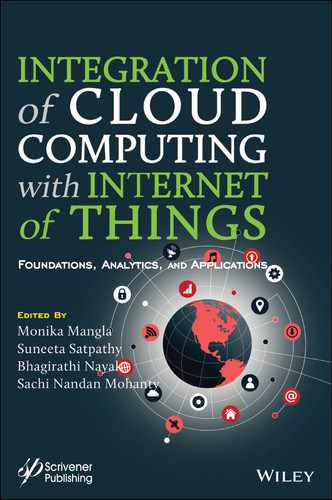19
Securing the Pharma Supply Chain Using Blockchain
Pulkit Arora, Chetna Sachdeva and Dolly Sharma*
Department of Computer Science, Amity School of Engineering and Technology, Amity University, Noida, India
Abstract
Through this chapter we aim to provide a solution to the currently flawed and highly unsecure prevalent model followed in the supply chain of the Pharmaceuticals. In the current scenario the stakeholders in the supply chain take full advantage of this out-dated system to make easy money keeping the health of people at stake. The prevalent system gives the people with such mal intent to manufacture and supply counterfeit drugs, or for example hoard the drugs high in demand to gain profit later. The solution to this should be a cost effective one and must not require a complete change in the model followed instead, the solution should be adaptive in nature such that it can be blended in the current scene. Through this chapter, we propose a solution to this problem by modifying the current system minutely. To achieve the desired results, we shall use the already in use, QR codes and a Unique ID already assigned to the drugs and attach a RFID mechanism on the batch. The information of the transit shall be timestamped, and all the data shall be encrypted and linked to the UID. This information shall contain all the details of the transit such as time, location, temperature, humidity, and pressure. Because the drugs are very sensitive to these physical conditions and any unwanted change in these can render the drugs useless and, in some cases, might also render them harmful. All this information shall be made public and any person with the credentials can check on the authenticity and the details of transit and can decide then if they want to buy the drug or not. This solution not only provides transparency, it also shall provide a trustworthy and reliable solution to falsified, and duplicate drugs as all the drugs’ credentials can be verified online and anyone who wishes to fiddle with the data would render the data useless as any tampering with the blockchain’s data can be caught.
Keywords: Blockchain, smart contracts, hash functions, QR codes, RFID, cryptography, TripleDES
19.1 Introduction
While the world has seen its fair share of technological advancements, and a lot of ventures have modified their age-old models with the change in technology, the supply chain in industries have not quite well kept up with the progression. It must be noted that with the advancement in technology the threats and risks associated with them also increase.
The drugs industry, for example, must not face any compromises as any trade off within the industry shall mean playing with the lives of the patients. The pharma supply chain for the fact has not quite improved much since its inception.
In the current scenario, the stakeholders in the supply chain take full advantage of the rigid system to make easy money keeping the health of people at stake [1, 2]. The prevalent system gives the people with such mal intent to manufacture and supply counterfeit drugs, or for example hoard the drugs high in demand to gain profit later [3]. Currently, the system that prevails is as follows: First, an order for the required drugs is made after the order is received, the manufacturer manufactures the drugs using the raw materials. After the manufacturing process is done, the drugs are packaged along with a barcode or a QR code. It is followed by the process of drugs being transported to the wholesaler. In the next step, the wholesaler dispatches the drugs to the final destinations (Hospital dispensaries, pharmacists, etc.) and the end consumer buys the drugs from the pharmacists or dispensaries and consumes the drug prescribed by the doctor.
The above steps have a huge margin of error and quite a few big loopholes that are exploited by the current stakeholders. As it is quite well known that neither the customer nor the retailer checks the authenticity or credentials of the drug while buying it by scanning the QR code on the back, the ones with mal intentions take advantage of this trusting nature of them and introduce a lot of counterfeit medications in the supply chain.
Now, it is partly the fault of the consumer and a huge fault of the system, as there is no prevalent app or any other mode through which the customer can scan and know each and every detail of the drug by examining the QR code. As of now if we scan the QR code using the apps on our phones or any other mode we can get the unique id of the medicine. But that is of no use to a common person as he cannot access the database of the manufacturer to check the authenticity of the medicine he is buying. Also, even if he had it would be very tedious and a time-consuming task that most of us would want to avoid.
We need a system in which the consumer can have the details of the medicine through which he can know the authenticity of the medicine on his fingertips without much effort and discomfort. A solution to this can be as simple as adding the whole details of the medicine in the QR code so that on scanning the consumer can get all the details of it.
But this system still has a loophole that hasn’t yet been addressed. The selling of counterfeit drugs can still continue despite the consumer being able to examine the QR code and gaining the details of the medicine. A counterfeit drug with a similar packaging and a similar QR code or even if a different QR code (if leads to a similar output) and seems legitimate can still fool the consumer into trusting its source and buying the fake drug.
To rectify this, we must provide a solution that would verify the source of the medicine; this can be done by the help of digital signatures [4] and can be easily applied to the current system. And to eliminate the issue of forging using an exact copy of packaging, and using the same QR code, that is, to eliminate the scope of reusing a QR code we can use the a simple concept of DBMS, that whenever an item is dispatched it’s entry be updated in the database and the same for the scenario when it has been sold it must not be shown into the database available for selling rather there must be a separate table for the ones that are sold. This can be achieved using a QR scanner at the billing desk of the pharmacist.
Now to achieve all these and also make this solution transparent a non-centralized solution must be achieved, but with a distributed system, the number of threats and attacks also increase with each increasing node, also a distributed system would not be immutable as per our requirement.
We need a system which would be secure and allow access only to those who are authorized to whilst still being transparent and immutable. But over all this, the solution must not incur a lot of extra cost and must fit-in well using the given resources and be compatible with the current system.
All this can be achieved if we propose a solution to this using blockchain.
19.2 Literature Review
A blockchain is an incorruptible developing rundown of records which is bound together by cryptographic hash values which make it immutable [5]. As shown in Figure 19.1, is a diagrammatic representation of blocks in a blockchain.
The Strength of a blockchain lies in its three pillars i.e. Decentralization, Immutability and Transparency [6]. These features are the main reason for us to choose blockchain as a viable option for this solution. The blockchain is considered very secure as it is widely used in various cryptocurrencies. Blockchain, which is a brainchild of Satoshi Nakamoto, created it to serve as a digital ledger for the cryptocurrency Bitcoin [7, 8]. Since then it has been adopted in other cryptocurrencies as well. The Blockchain then became so popular that now it is no longer limited to just cryptocurrencies it is also making way in different scenarios such as the Power Distribution Industry, Online Voting using Blockchain, etc. One of the most popular use cases is in supply chains. One of the most important features of blockchain is the inclusion of smart contracts, a smart contract is a self-verifiable contract among the parties involved. It enables the contract to validate and verify itself without the involvement of a third party and hence is considered more secure as less people are involved, the chances of errors are reduced too. The smart contracts are majorly used in crowdfunding but can also be used in other areas such as insurance to process claims, banks for loans and automatic payments, postal delivery for payments on delivery etc. As shown in Figure 19.2, the Flow of Events in a Blockchain is as follows:

Figure 19.1 Block diagram of a blockchain.

Figure 19.2 Flow of events in a blockchain.
19.2.1 Current Scenario
To explain the current scenario, we would like to start with the following excerpt from a study: “A Fraser Institute Study says that worldwide pharmaceutical sales reached USD 1.1 trillion in the year 2015. The OECD has found that counterfeit-goods accounted for 2.5% of the global pharmaceutical drugs trade” [9]. As shown in Figure 19.3, the number of fraudulent cases in the years 2012 to 2016 can be seen in the form of a line graph.
“Total number of fraudulent pharmaceutical incidents has risen by 56% since 2012. A fraudulent incident is defined as either counterfeiting, illegal diversion or theft” [10].
It is also estimated that the counterfeit drugs are sold at more than twice the rate followed by the actual legal ones. This is a very grave issue and must be entertained as soon as possible as the intake of such drugs can be life threatening, also even if the drugs are legitimate, they might still have been tampered with or might have lost their integrity in the transit thereby still risking the lives of those consuming it. So, the issues in the prevalent system can be summarised as: “Falsified medicines like those which are tampered with it can be in any way such as wrong ingredients, fake packaging, authenticity, low product quality, fake shipment history, error prone paperwork, slow processing, etc.” [10, 11].

Figure 19.3 Number of fraudulent incidents (from 2012 to 2016).
19.2.2 Proposal
Using a blockchain based system can pose a major boom to the pharmaceuticals’ supply network, at each phase, we propose, to use standardized QR codes that would be scanned and be used as a primary key to the records they point to, each transaction shall be recorded on the blockchain and shall be ciphered such that only the ones authorized to view the details can view them this would add a component of privacy and data abstraction to the system whilst also giving it a cent percent transparency [12, 13]. This would create a trail of drug records. Also, sensors which are already available in the vehicles of transit can be used to record real time data such as temperature and humidity which would be recorded into the blockchain if any unwanted change is experienced. Though this is especially for the drugs that require to be kept in cold storage, but it can also be beneficial for tracking any unwanted tampering of the drugs in transit. A temperature sensor can be installed on the inside of a consignment. If it catches any sudden change in temperature it would mean that the consignment has been opened as only that could lead to a sudden change in temperature it can be both sudden rise and sudden dip in temperatures. The sensors must immediately record it on to the blockchain.
The smart contracts would come in handy at this time to verify if the drugs have been opened by someone who was designated to do so or have they been opened by someone who was not supposed to be opening them, this, we propose, can be achieved by using an private and public key combination along with GPS tracking. So that only the authorized personnel handles the drugs at the designated place only, the drugs must never be tampered with in the transit.
Now as there are temperature sensors already installed in the containers in which the drugs are transported and the pharma companies already use the QR codes the blockchain inclusion in the current supply chain wouldn’t bear much cost so the solution would reduce the complexity and cost in turn as it would make the drugs easier to be tracked and the centralized system to store the details of the drugs would help in keeping charge of the expiry dates hence would in turn improve the control over the stock. The blockchain solution would also strengthen the security, the smart contracts would also reduce errors, and build trust in the transactions. To maintain immutability, we use cryptographic hash functions.
Now for the transparency to the consumer, using this the consumer would be able to trace the transit of the drug he is buying from the source till the destination that is him. A blockchain based tracking system would enable him to scan the QR code on a drug and verify it immediately by checking the digital signature and the secure transit it has had. If the consumer is satisfied with the drug being legitimate, we propose that the retailers who sell the drug to the consumer must use a digital platform for the checkout it would add a transaction on the blockchain and the product can be removed from the inventory hence duplicate packaging and duplicate QR codes wouldn’t be of any use, and anyone using duplicate QR codes can be caught.
Now, as it has been mentioned earlier, the immutability is achieved through the concept of cryptographic hash. In straightforward terms, hashing implies taking an information string of any length and giving out a yield of a fixed length. The hash functions are also called one-way functions, as an output can only be generated using a given input and any other input cannot generate the same output. Nor can the input be generated using the output string; hence it is safe and secure and highly trustworthy. Hence even in the case of bitcoins where information is highly sensitive and very important, the hashing algorithms are used. Therefore, as drugs are a very sensitive concern, we must use hash functions to achieve immutability.
If someone tries to tamper with any one of the blocks of the blockchain, they would end up changing its hash value, now as a blockchain is linked using hashes all the other blocks would fail and the blockchain shall be nullified. As shown in Table 19.1, two different sequences of characters do not have the same hash value and as shown in Table 19.2, even the slightest change would alter the hash value.
Table 19.1 Example of corresponding hash values of random texts.
| Input | Corresponding hash value |
| Hi | 3639EFCD08ABB273B1619E82E78C29A7DF02C1051B1820E99FC39DCAA3326B8 |
| Transaction received | 53A53FC9E2A03F9B6E66D84BA701574CD9CFS01FB498C41731881BCDC68A7C8 |
Table 19.2 Illustrating the change in hash value just by changing the case of the first letter.
| Input | Corresponding hash value |
| This is a test | C7BE1ED902FB8DD4D48997C6452F5D7E509FBCDBE2808B16BCF4EDCE4CO7D14E |
| This is a test | 2E99758548972A8E8822AD47FA1017FF72F06F3FF6A016851F4C398732BC50C |
19.3 Methodology
All the stakeholders that can be involved in the production and the distribution of drugs are as follows:
- Manufacturers
- Logistic Service Providers
- Hospital/Pharmacy
- Patient
- Supplier
- Transporter
- Wholesaler
- Distributer
Step 1: Manufacturer manufactures the drugs and adds QR code to it
When a manufacturer manufactures the drugs, he shall add a QR code stamp to it and the QR code shall contain all the essential information such as the time, location manufacturing and expiry dates, etc. All this information gets added on to the blockchain and is universally available hence all the stakeholders involved can trace the supply of drugs transparently [14].
Whenever a new info is added to the blockchain a new HASH id is produced which can be used to trace the flow of events in the complete lifespan of the blockchain.
As the drugs will be shipped to the distributors, the trucks used to transport them shall be equipped with temperature sensors to enable cold-chain shipping.
The inclusion of blockchain in this market will also enable the possibility of exchanging and storing the data gathered by temperature sensors on the blockchain. The transparent and immutable distributed ledger can save a lot of time in case of auditing of storage conditions of the drugs that are sensitive to variable temperatures.
“The drugs transferred through such IOT vehicles can send real time data such as location, etc. to the blockchain so that those involved and the government can keep a check on the time of the receiving and delivery of the drugs”
Step 2: Distributors send the drugs to hospitals/pharmacists
As the service provider who manages the logistics sends the medicines to the distributer, the origin of the medicines can be verified using the hash ID’s corresponding to the QR codes in the blockchain.
In this step the temperature sensors and other sensors such as the humidity and GPS tracker come in handy, they can be used to track all the parameters in the IOT enabled vehicles whilst keeping the drugs safe and under constant surveillance.
The distributors on receiving the medicines provide a digital signature along with the timestamp which is then added to the blockchain.
Step 3: Pharmacists receive the drugs and verify its source
When the retailer pharmacists receive their drug consignments they can trace the drugs back to their origin, they can view all the stoppages that occurred in the transit they can see if the temperatures were maintained and once they accept the consignment it goes on as a contract using the smart contracts and they cannot deny accepting the consignment later on ever in the future as they are bound by the smart contracts.
If and when a distributor attempts to sell counterfeit drugs this can be verified using the hash code on the back of the medicine as the counterfeit drug will not be able to imitate the QR code of the original drug as the QR code is made using the Hash ID of the medicine and no two hashes are ever identical. Even if the QR code has been duplicated out of any other drug that can also be verified as the whole distribution circle would act as a giant inventory once it is “de-centrally” connected using blockchain. Also, the robust nature of blockchain prevents such fraudulent distributors to illegally add a fake transaction in the blockchain as the transaction will immediately be termed as invalid. Moreover, without the private key of the authorized personnel these individuals will not be able to carry out such fraudulent transactions.
Hence pharmacists shall immediately get to know of any anomalies if carried out within the transactions.
Once he approves the received medicines’ transaction the new medicines’ details are added to the blockchain.
Step 4: Patients buy the drugs and scan the QR code to trace back its source
Patients ought to be assured that the drugs they buy are safe to take. By following a simple procedure of scanning the QR code attached to the drug they are buying they can see on their mobile phones the complete details of the medicine and its journey to the drug store and if it meets the quality standards.
There is a hash ID which is linked to the QR code which can be used to get the information from the blockchain and the patients can see the essential details which are in the blockchain.
Also, the patients can give the feedback for the medicine they bought and it would be linked to the drug’s ID that is stored on the chain. The rating they give shall be fruitful for the other consumers and would help them choose wisely amongst a wide range of similar drugs.
To show the above described features are achieved we have designed a prototype model which uses RFID tags in place of QR codes to keep a track of the information and uses a TripleDES cryptographic algorithm to encrypt and decrypt the information to and from the source of its inception. Whenever new information is stored onto the database it is first encrypted and only the authorized personnel can view the encrypted information using the key to show he is authorized to do so.
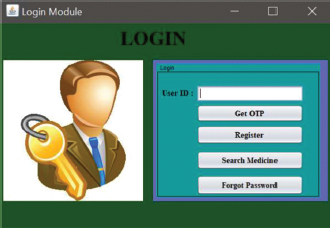
Figure 19.4 Screenshot of the login page.
As shown in Figure 19.4, a screenshot of the login page of our prototype, in this the authorised personnel can login using their credentials, an OTP is generated each time to maintain secure and selective entry.
From this module anyone who has a valid RFID card can search for the medicines, i.e. their whereabouts and other details. As shown in Figure 19.5, the interaction diagram shows the processes involved in the same.
The admin panel, as shown in Figure 19.6, has the various functions that the admin can perform are listed, that is he can add or remove branches, add, update or view cargo details.
All the cargo details are linked to a separate RFID tag.
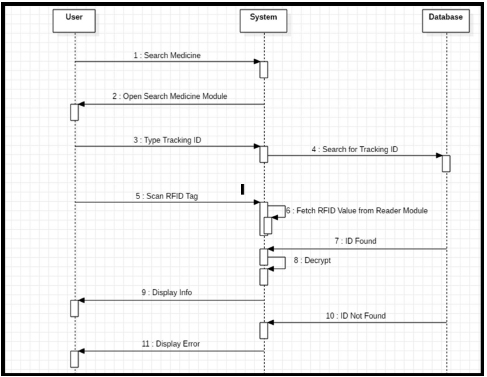
Figure 19.5 Search medicine’s interaction diagram.
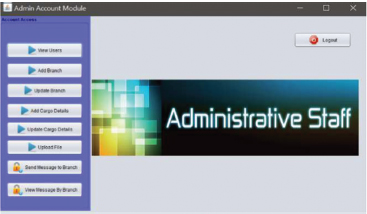
Figure 19.6 Screenshot of the admin account module.
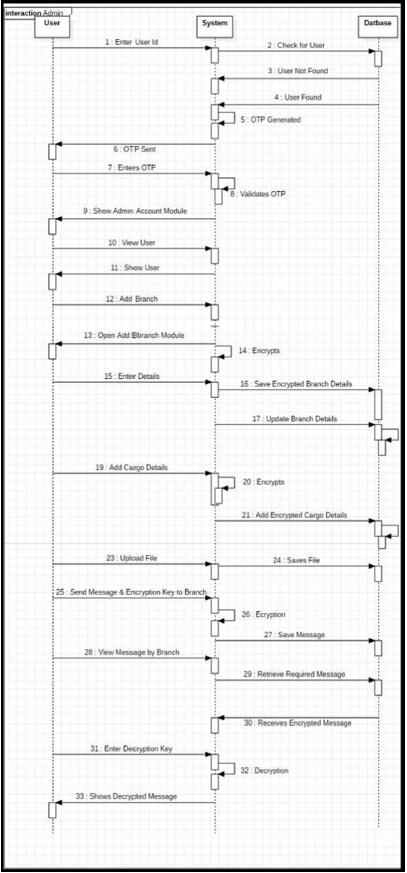
Figure 19.7 Admin’s interaction diagram.
To showcase what all can be done using the admin panel the sequence diagram as shown in Figure 19.7, can be referred for all the actions that an admin can perform:
We even tried to create a secure private communication channel for the branch managers and admin, as shown in Figure 19.8, the admin can send a cryptic message to the branch manager and only that manager shall receive the message and can only read the message if he has the key to decipher the message.
As shown in Figure 19.9, the message remains unreadable unless the key is entered.
As shown in Figure 19.10, once the correct key is entered the message gets decrypted, this encryption and decryption process is done using the TripleDES algorithm that we used in this model to encrypt the other data too.
The schematic diagram for hardware-based solution for fetching the details using RFID reader module was drawn, as shown in Figure 19.11.
As shown in Figure 19.12, all the functions that a branch manager can perform in our prototype are depicted in a sequence diagram, almost all the functions of a branch manager are similar to the admin, but it mainly just deals with the collection and shipment of consignments and the admin has much more responsibilities than the branch manager.

Figure 19.8 Screenshot of the chat module between admin and branch manager.
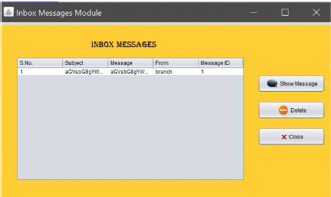
Figure 19.9 Screenshot of the encrypting part of a decrypted received message.

Figure 19.10 Screenshot of the decrypted received message.
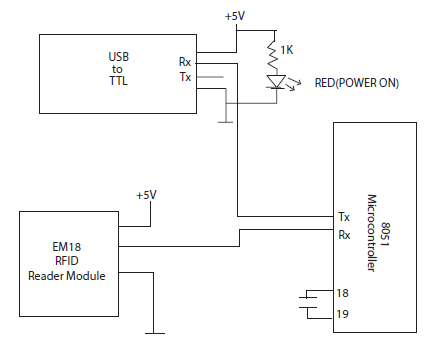
Figure 19.11 Circuit diagram for the RFID reader module.
19.4 Results
Now, to cope with the various technological advancements in the various fields, and the adaptation of those technical leaps in the industries, we have proposed a model for the pharmaceutical supply chain, which would use a series of QR codes, RFID tags, temperature and humidity sensors and GPS trackers, a lot of which are already in use hence not causing a huge financial burden on the industry. We have proposed a model of the supply chain which would integrate all the above used components in a blockchain which would make the system not only efficient but also secure it.

Figure 19.12 Branch manager’s interaction diagram.
We extensively studied the current pharma supply chain model, and various alternatives that can be put in place of the current model or various improvements that can be done and that step by step approach led us to making this blockchain based model. We then researched on various encryption algorithms and hashing techniques and chose the one which is widely used and accepted because of its efficiency and security.
While moving away from the current system which is prone to various loopholes, our model we believe, is robust and is the solution the current pharma supply chain industry needs at this point.
To move further, in the future we would like to try and expand the horizons of our learnings and conduct more research works to try and find even better alternatives to the current model’s modules or the module as a whole, we would like to find methods which would make this model even more secure, reliable and efficient.
As the field of blockchain hasn’t been here for long, there are various researches already going on about it, also various industries are learning from those researches and trying to implement this new concept into their architectures. With time the researches, would bring some new advancements in this field also there would be a lot to learn from the various new industries that have already implemented blockchain, their learnings and findings can be used to implement, extend and improve our model.
As shown in Figure 19.13, the number of accounted fraudulent cases from the year 2012 to 2016 has been plotted in a graph along with the subtotal of the total cases in those five years. The contents of the following graph have been discussed in the earlier chapters of this report; the following graph shows the number of cases per year in the duration of 2012 to 2016, from this we can estimate the increasing number of cases per year in the years to follow. It must be noted that the following graph only depicts the number of cases that have been reported. There might be uncountable other cases that may go unnoticed every year.
As per the above graph we need to find the estimate change in percentage per year to estimate the number of cases in the years to come. As shown in Table 19.3, the percentage change in number of cases has been calculated, this would aid us to find the estimate increase in the subsequent years’ fraudulent cases.
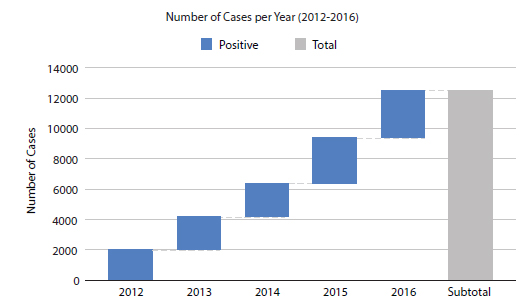
Figure 19.13 Number of cases per year (2012–2016).
Table 19.3 Number of cases vs the percentage increase in cases (2012–2016).
| Number of cases | Percentage change | |
| 2012 | 2018 | |
| 2013 | 2193 | 8.67 |
| 2014 | 2177 | –0.7 |
| 2015 | 3002 | 37 |
| 2016 | 3147 | 4.8 |
Basis this information no concrete value can be chosen to estimate the number of fraudulent cases in the future years.
So, we take the mean of the percentage values which comes out to be 12.4425% increase per annum.
With this we can estimate the number of future cases, at a constant rate of 12.44% growth per annum. As shown in Figure 19.14, we have plotted the estimated number of cases in the years 2017 to 2021 based on the patterns followed in the previous five years.
As can be seen from the chart, the cases get doubled every five to six years if no changes are to be made in the system.
Coming to that, we cannot state exactly how much of a difference our proposed changes to the current supply chain model would make. But the effect would be positive and the decrease in the number of fraudulent cases will drastically increase with each added level of security. Take for example the inclusion of QR codes in our current model that would be a welcome addition.

Figure 19.14 Estimated number of cases 2017–2021 basis the previous trends.
19.5 Conclusion and Future Scope
The objectives of this chapter, we believe, were achieved. It was a great learning experience; we got to learn a lot of new technologies, none of which were known to us previously. The chapter’s objectives were met, the main objective was to propose a reliable model for the falling pharmaceutical supply chain industry and it was found, proposed, researched and a prototype for the model was made. The main motive of using blockchain was to eliminate all the loopholes the current industry has to offer such as fraudulent drugs, drug hoardings, expired drugs, and health of the drug (using temperature, humidity as the parameters). These aims were achieved while keeping the other aim in mind that is to propose a solution which is also cost effective, now the solution which we proposed doesn’t require a lot of new infrastructure only the back-end codes need to be altered as physically the components used are more or less the same, the only financial overhead would be the implementation of QR code scanners and RFID scanners at the billing desks of the retailers, etc.
Blockchain is a new emerging and promising field, which is safe, secure and transparent, which is why it is gaining so much popularity among various industries. During the research phase of this chapter we read lot of literature available on blockchain and we can safely conclude that the future of blockchain is very vast as more and more applications of blockchain are coming into the picture with each passing day. From where we stand today, it would be safe to state that blockchain is the technology of future; it is the framework on which the future models would be based on.
Given a chance to improve our model we would surely like to work upon our proposed model and include cloud storage rather than the physical storage that we have currently used, as blockchain is a decentralized network and for it to work efficiently the data should be stored individually at different nodes. With the inclusion of cloud storage, we would like to study more about SDN and use them too in our model to strengthen the security of our model. Other than SDN and cloud storage, we would like to work with various sensors such as the humidity and temperature sensor and also the location sensors which would give us the exact location and make the system even more trustworthy with the location parameter also included. Also we’d like to include some QR code reader mechanism, we were thinking something cost effective yet efficient and the only thing that strikes our minds is our smartphones but we tried including that aspect even this time, but it wasn’t possible as there were many constraints that we couldn’t finalize and that was compromising with our security aspect. We would like to use the smartphones in scanning the QR code and giving the customers an easy way to check the drug they are buying in the future.
References
1. How blockchain could strengthen the pharmaceutical supply chain, 171206-163826-JC-OS, pWc 1-5, Report (online report), https://www.pwc.co.uk/healthcare/pdf/health-blockchain-supplychain-report%20v4.pdf, 2017.
2. Enescu, F.M., Bizon, N., Cirstea, A., Stirbu, C., Blockchain Technology Applied in Health, ECAI 2018—International Conference—10th Edition.
3. Blockchain: The next frontier for pharmaceutical supply chains, Pharma Logistics, Pharma Logistics IQ, UK, 2018 https://www.pharmalogisticsiq.com/logistics/articles/blockchain-the-next-frontier-for-pharmaceutical-supply-chains.
4. Chaum, Rivert R.L., Sherman, A.K., Blind Signatures For Untraceable Payments, Advance in Cryptology, Proc. of Crypto 82, Springer, Boston, pp 199–203, 1983 Back, Hashcash—A Denial of Service Counter-Measure, Http://Www.Hashcash.Org/Papers/Hashcash.Pdf, no. August, pp. 1–10, 2002.
5. Kaid, D. and Eljazzar, M.M., Applying Blockchain to Automate Installments Payment between Supply Chain Parties, 2018 14th International Computer Engineering Conference (ICENCO).
6. https://blockchain.wtf/edu/blockchain-101/.
7. Bocek, T., Rodrigues, B.B., Strasser, T., Stiller, B., Blockchains Everywhere—A Use-case of Blockchains in the Pharma Supply-Chain, 2017 IFIP/IEEE Symposium on Integrated Network and Service Management (IM)Florian Tschorsch, “Bitcoin and Beyond: A Technical Survey on Decentralized Digital Currencies, https://eprint.iacr.org/2015/464.pdf.
8. Dai, W. Nakamoto, S., b-Money, an anonymous, distributed electronic cash system, http://weidai.com/bmoney.txt, 1998.
9. Pharmaceutical Counterfeiting: Endangering Public Health, Society, and the Economy: https://www.fraserinstitute.org/studies/pharmaceutical-counterfeiting-endangering-public-health-society-and-the-economy, Online Report, 1-81, 2018.
10. Blockchain in Pharma Supply Chain—Reducing Counterfeit Drugs, https://www.leewayhertz.com/blockchain-in-pharma-supply-chain/.
11. How Blockchain has Turned out to be a Game Changer in Supply Chain Management, https://www.sofocle.com/blockchain-a-game-changer-in-supply-chain-management/, Online Report [Accessed on: 13/05/2020].
12. BlockChain for Efficient Management of Pharma Supply Chain, sofocle.com, https://www.sofocle.com/how-is-blockchain-contributing-to-the-efficient-management-of-pharma-supply-chain/, Online Report [Accessed on: 13/05/2020].
13. Blockchain in Pharma Supply Chain—Reducing Counterfeit Drugs, Path Global Health, 112, 4, 161, 2018, https://www.leewayhertz.com/blockchain-in-pharma-supply-chain/#work.
- *Corresponding author: [email protected]
